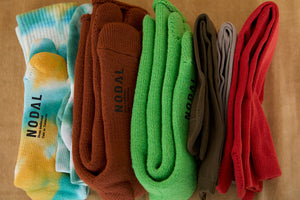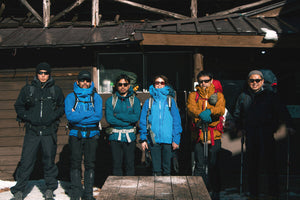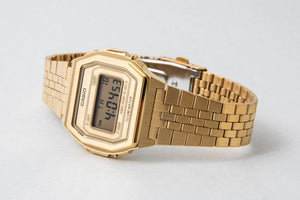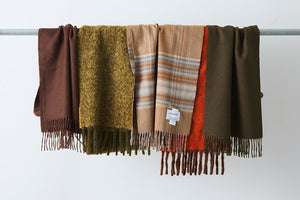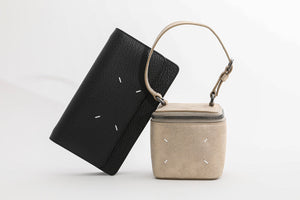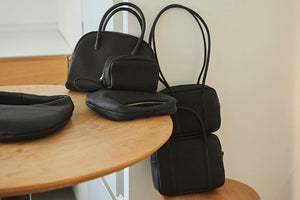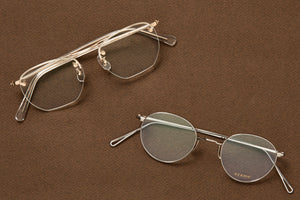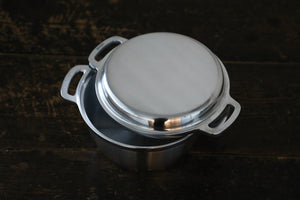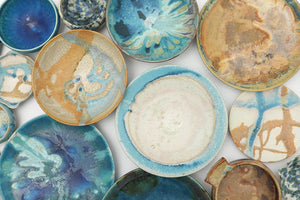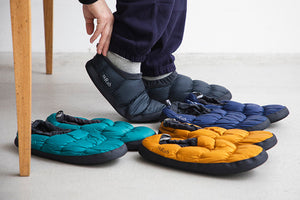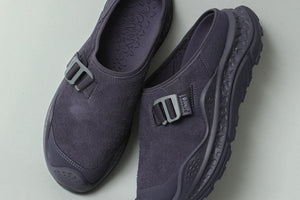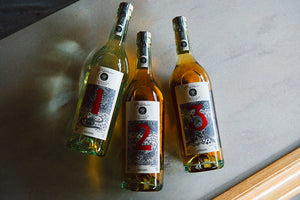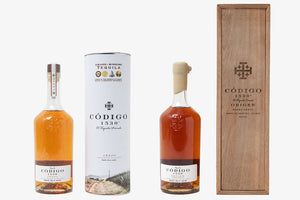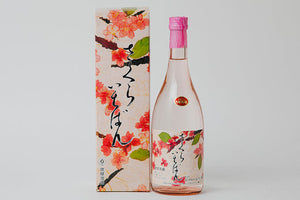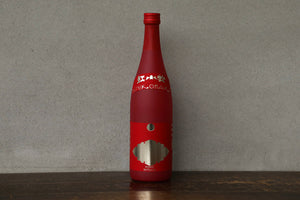
COVERCHORD EXCLUSIVE
MAHO HARADA
Solo Exhibition
at COVERCHORD
Delicate neriage technique brings soft tones & bold geometric ceramics to life.
MAHO HARADA’s first solo exhibition now on view.
5月17日 (土) 発売
Unique neriage ceramics woven with soft colors and geometric patterns.
A solo exhibition by Kumamoto-based ceramic artist MAHO HARADA will be held at COVERCHORD Nakameguro and Fukuoka from Saturday, June 7th.
Harada’s work features the intricate neriage technique―carefully layering colored clays to create patterns that run through the entire piece, not just on the surface.
Each one-of-a-kind creation, with its bold designs and soft tones, is the result of countless hours of precise craftsmanship.
The pieces created for this exhibition―Harada’s first solo show at COVERCHORD―reflect the subtle emotions she experiences in daily life, captured in the designs and colors.
Each piece carries a sense of feeling and warmth.
We invite you to pick them up and enjoy them in your hands.

Visiting the studio surrounded by magnificent nature
For those seeing MAHO HARADA’s work for the first time, the delicate patterns may look like they’ve been painted on.
In fact, they’re created using an intricate and time-consuming neriage technique―one of the most meticulous methods in ceramics.
The neriage process involves many steps, and it can take at least three to six months for a single piece to be completed. Before even starting, Harada spends time sketching ideas and planning each design. Of course, this means her works are not produced in large quantities.
Different colored clays, each mixed with pigments, are kneaded together following her designs to create bold geometric patterns.
These patterns are sliced and pressed into plaster molds to form the final pieces. Each one is carefully made over long hours of precise, detailed work.
Like a “Kintaro candy,” the same pattern appears no matter where you cut the clay. Rather than applying color to the surface with glazes, the color is embedded within the clay itself―giving the pieces a unique softness and depth.
Yet neriage is an incredibly difficult technique. Each color of clay shrinks and reacts differently, making it prone to cracking. The yield rate is very low, and many pieces don’t make it through the process.
Still, Harada is captivated by the possibilities that only neriage can offer. Through years of trial and error, she has developed her own distinctive style.
To learn more about Harada’s work, COVERCHORD visited her studio, nestled in the quiet mountains of Yamato, Kumamoto.
About a 40-minute drive from Kumamoto Airport, down a mountain road, lies Harada’s studio, tucked away from the world.
Her days are spent helping her parents with farm work in between making ceramics. Outside the window, terraced rice fields stretch across the landscape, changing with the seasons. Beyond them, the ridgeline of towering mountains fills the horizon.A quiet and lush space, embraced by nature.
This time, we were given a special opportunity to observe the forming process, one of the many steps in neriage.
First, it takes about a month to layer together the colored clays and patterns, followed by another three months of resting the material. When ready, the clay is quickly sliced to the desired thickness using a tatara slab roller.
“Curing is everything,” Harada says. “Technique is important, but the real challenge is keeping the clay clean and preventing it from drying out. That’s where I focus most of my attention.”
All the materials are natural, so factors like environment, humidity, and temperature can change the results. Even the same color can look different each time.
“Some shapes have become more stable with experience, but with new patterns, I might get just one usable slice out of ten. Even if I do everything right, sometimes it’s down to luck.”
The 5mm-thick clay slices are left to rest for a day to balance the moisture before they’re carefully shaped to fit the mold.
The clay is gently pressed into the plaster mold, as if wrapping it softly to take shape.
The base of the cup, where the patterns narrow tightly, is a delicate part. Excess clay is carefully trimmed to keep the design intact, and the edges are smoothed with care.
“Honestly, I only started shaping by trial and error after going independent. It’s not something you’re taught, so I don’t know how other people do neriage―I’m still a beginner (laugh).”
Harada studied the basics of ceramics at Arita College of Ceramics in Saga and was drawn to the beauty of neriage, which she discovered as a student. After graduation, she joined Yusuke Aida’s studio in Yamanashi.
There, she didn’t learn shaping techniques directly, but absorbed them by watching a craftsman with 30 years of experience and practicing through hands-on trial and error.
“I think it’s the same everywhere―there’s just not enough time in this field to be taught every single step.”
Rather than learning a fixed method, Harada has developed her skills through her own hands and intuition. Each piece born from this trial and error reflects her journey―filled with quiet confidence and years of dedication.
Harada converted part of a small farm shed near her family home into a studio, shaping the space with her own hands.
The clean, tidy interior reflects her sense of comfort and style, and the space has a quiet, tranquil atmosphere.
When she begins working, the mood shifts entirely―the space fills with a focused tension.
“My dog Kinnosuke is often in the studio, but when I’m shaping, he doesn’t make a sound (laugh). I guess people who make things must have pretty serious expressions.”
She adds with a shy smile,
“Maybe it’s like The Crane’s Return―once you see it, the magic fades.”

After gently tapping the clay to blend the shape and pattern, the excess is carefully trimmed.
Even after removing the plaster mold, the precise, delicate work continues, adding moisture as needed.
“How much time and care I put in here decides if the piece succeeds or fails.
Even if it cracks, I’m fine as long as I know I did my best.
But I don’t want to regret thinking, If only I had done more...
I think I spend more time on these hidden steps every year.
I used to think I’d make more pieces as I gained experience, but that hasn’t been the case at all (laugh). I might actually be making fewer now (laugh).”
Her words show quiet determination and years of commitment to her craft.

The origins of inspiration,
and the story that begins on graph paper.
Harada’s ceramics always start with a single sheet of graph paper.
She takes the ideas in her mind, refines them into geometric patterns, and carefully transfers them into detailed designs.
“I’ve always liked graph paper. Even now, my favorite part of the process is drawing the designs. Some things just don’t change.”
During her time at ceramics school, where she enrolled with the dream of working in craft, Harada discovered neriage by chance―when she saw a single piece in a shop in Arita.
She says she felt a kind of intensity from the pattern, which ran through the entire piece.
That encounter marked the beginning of her neriage journey.Today, each pattern she creates has its own name.

Color clay samples used to test pattern and color combinations. A key step in the design process.
OVAL PLATE - IN THE POOL ¥36,000
MEDIUM PLATE - GO! ¥17,000
“At first, there were so many patterns that explaining them over the phone became a hassle (laugh). So I started giving them names to make it easier, and then more and more customers started enjoying the process too.”
Sources of inspiration are everywhere in daily life―music from the radio, a phrase from a magazine, a snippet from a conversation.
Sometimes the title comes first, other times it emerges while working.
“When I keep thinking about a word, the image starts to take shape. I sit in front of the graph paper, and my hand just moves.”
It’s not about having a clear concept―more like a fleeting word or scene crystallizes into form.
Every corner of the studio reflects her sense of comfort and playfulness.
ROUND PLATE - WARABI AND ZENMAI ¥36,000
TRUMPET CUP - THE EARTH KEEPS TURNING ¥9,500
Many of the pieces in this exhibition are inspired by motifs found in nature.
Harada says that looking at her work afterward sometimes makes her realize what she was feeling at the time of creation.
“Even when I’m not thinking about anything in particular, certain things just stick with me. Whether I’m aware of it or not, they always find a way into my work.”
These small, everyday observations and fragments of feeling take shape and become her ceramics.
That sense of curiosity and joy still drives her work today.
“I’m just grateful that I can keep going without getting bored―and still have fun doing it.”

CUP & SAUCER - SUNBATHING ¥20,000

MAHO HARADA
at COVERCHORD
Saturday, June 7th – Wednesday, June 11th, 2025 11:00 – 19:00
*Purchases limited to 4 items per person.
*Please note that items will not be available online during the exhibition period.
Venue: COVERCHORD Nakameguro
1-23-14 Aobadai, Meguro-ku, Tokyo
Instagram_@coverchord nakameguro
Venue: COVERCHORD Fukuoka
1F, 2-17-23 Kego, Chuo-ku, Fukuoka
Instagram_@coverchord_fukuoka

MAHO HARADA
1977 Born in Kumamoto, Japan
1999 Graduated from Arita College of Ceramics, Saga Prefecture, Joined Yusuke Aida Studio
2001 Established her own kiln in Kumamoto
Artist’s Note for the Exhibition
The kiln’s inscription shows it was built in August 2001.
It’s hard to believe it’s been nearly 24 years.
I’ve kept going, stubbornly, all these years―drawn to the neriage technique, which builds patterns even into the unseen parts of the piece.
I think it’s the intensity of that process that still captivates me.
If the works on display at COVERCHORD resonate with your heart and make you want to share your thoughts, I would be grateful.
